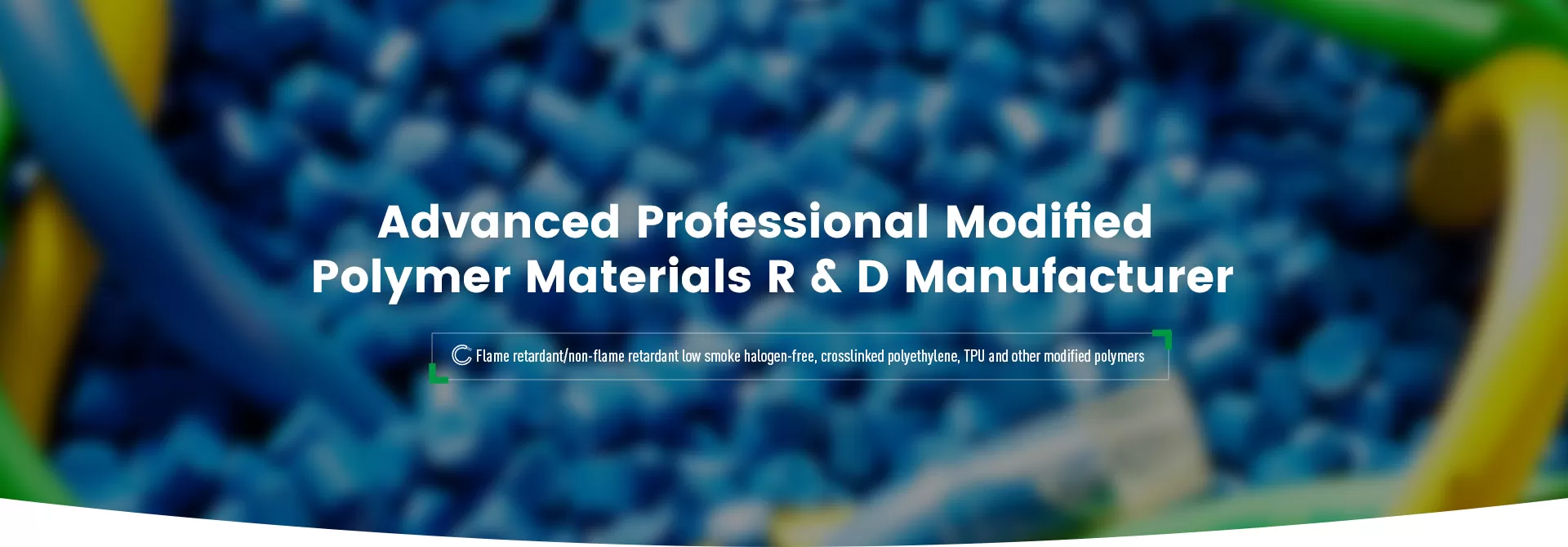
In modern cable manufacturing, Low Smoke Zero Halogen Compound (LSZH) has become an indispensable material system. It can significantly reduce the release of smoke and toxic gases in the event of a fire, and is widely used in places with extremely high safety requirements such as subways, high-rise buildings, data centers, and hospitals.
However, the formula design of LSZH Material is not as simple as "halogen-free + flame retardant". Formulation engineers must find the best balance between flame retardant efficiency, mechanical strength, and processing performance.
(This article is written by non-engineers)
Ⅰ.Material structure composition of Low Smoke Zero Halogen Compound
LSZH materials are usually composed of polyolefin-based polymers + inorganic flame retardants + additives systems. The following is a typical component classification:
| Ingredient categories | Commonly used materials | Functional description |
| Base polymers | EVA, PE, EBA, POE | Provide flexibility, processability, and mechanical strength |
| Flame retardants | Aluminum hydroxide (ATH), magnesium hydroxide (MDH) | Absorb heat and cool down, inhibit combustion, and release water vapor to dilute combustible gases |
| Compatibilizers | Maleic anhydride grafted polyolefin (PO-g-MA) | Enhance the interface between filler and resin and improve mechanical properties |
| Lubricants/processing aids | Paraffin oil, EBS, oxidized polyethylene wax | Improve fluidity, surface quality, and processing stability |
| Antioxidants | Irganox 1010 + 168, etc. | Prevent thermal oxidation aging and extend service life |
The amount of inorganic flame retardant added to the formula is usually as high as 50%-65%, which is the basis for achieving flame retardant properties, but it also brings challenges such as decreased mechanical properties and increased processing difficulty.
Ⅱ.Design and Regulation of Flame Retardant Properties
LSZH materials use a physical flame retardant mechanism, relying on inorganic flame retardants to absorb heat and release water vapor at high temperatures to delay combustion. The formula should meet the following standards:
Oxygen index LOI ≥ 30% (the higher the more flame retardant)
Vertical combustion IEC 60332-1 / -3 qualified
Smoke density Ds ≤ 150 (ASTM E662)
Halogen acid gas release IEC 60754-1 is 0
Flame retardant strategy recommendations:
Choose ATH or MDH with fine particle size and good surface treatment to improve dispersibility;
Use ATH and MDH in combination, taking into account decomposition temperature and flame retardant efficiency;
Increase polar compatibilizers to improve structural stability in high-filling systems.
Ⅲ.Mechanical Performance Guarantee: Flexibility And Strength Are Equally Important
High flame retardant systems often sacrifice flexibility and strength. Especially in low temperature environments or cable repeated bending scenarios, the formula must maintain the following indicators:
Tensile strength ≥ 10 MPa
Elongation at break ≥ 150%
Thermal elongation ≤ 175% (200°C)
No cracks in cold bending (-15°C)
Formula optimization strategy:
Increase the proportion of flexible polymers such as EBA and POE;
Use maleic anhydride grafted copolymer to enhance adhesion;
Control the particle morphology of flame retardants to reduce material brittleness;
Introduce a trace cross-linking system to improve creep resistance when necessary.
IV. Processing performance design: Improve production efficiency and apparent quality
The high viscosity caused by high filling makes LSZH materials face problems such as insufficient fluidity and rough product surface in processing links such as extrusion and injection molding.
Typical problems and improvement measures:
| Processing problems | Causes | Solution suggestions |
| Melt fracture | Melt viscosity is too high | Introduce lubricants to reduce shear rate |
| Surface pitting | Filler dispersion is uneven | Use spherical filler + dispersant system |
| Unstable extrusion | Shear-heat imbalance | Use segmented temperature control + vacuum exhaust |
Recommended process parameters (reference):
Extrusion temperature range: 180℃–210℃
Screw speed control: low speed and high back pressure type to ensure homogeneous mixing
Die head design: short flow channel + inner surface mirror treatment to reduce shear dead angle
V. Typical formula examples and performance comparison
Example 1: General LSZH sheath material (high flame retardant + medium flexibility)
| Materials | Ratio (wt%) |
| EVA (28% VA) | 25% |
| ATH (D50 = 2 μm) | 55% |
| POE elastomer | 8% |
| Compatibilizer (PO-g-MA) | 2% |
| Lubricant + antioxidant | 3% |
| Other additives | 7% |
Performance Results:
LOI: 32%
Tensile Strength: 11 MPa
Elongation: 180%
Smoke Density Ds: 110